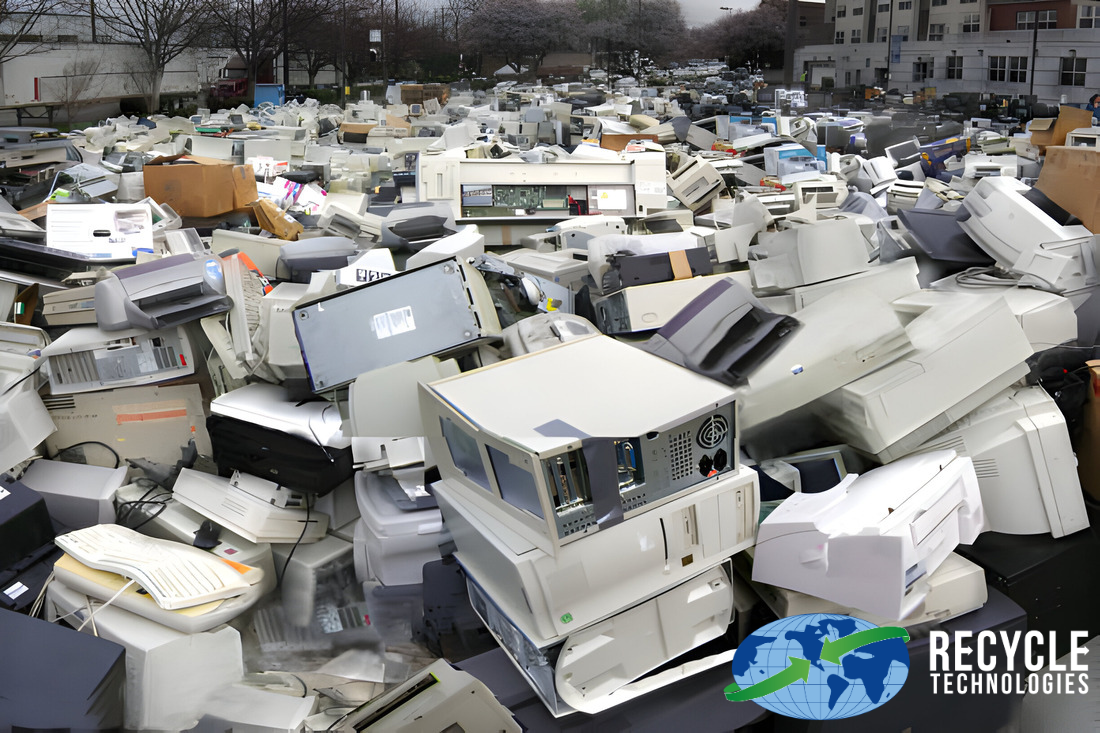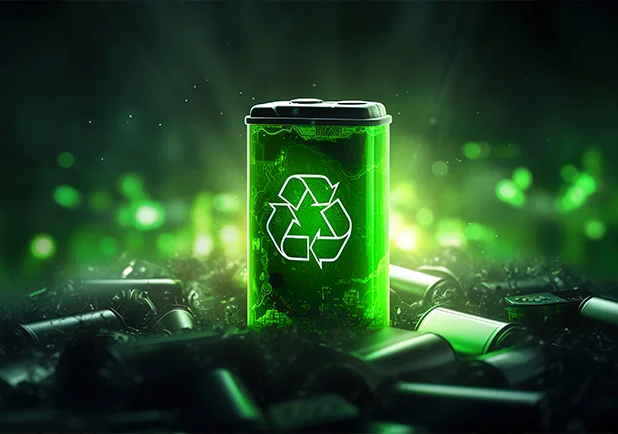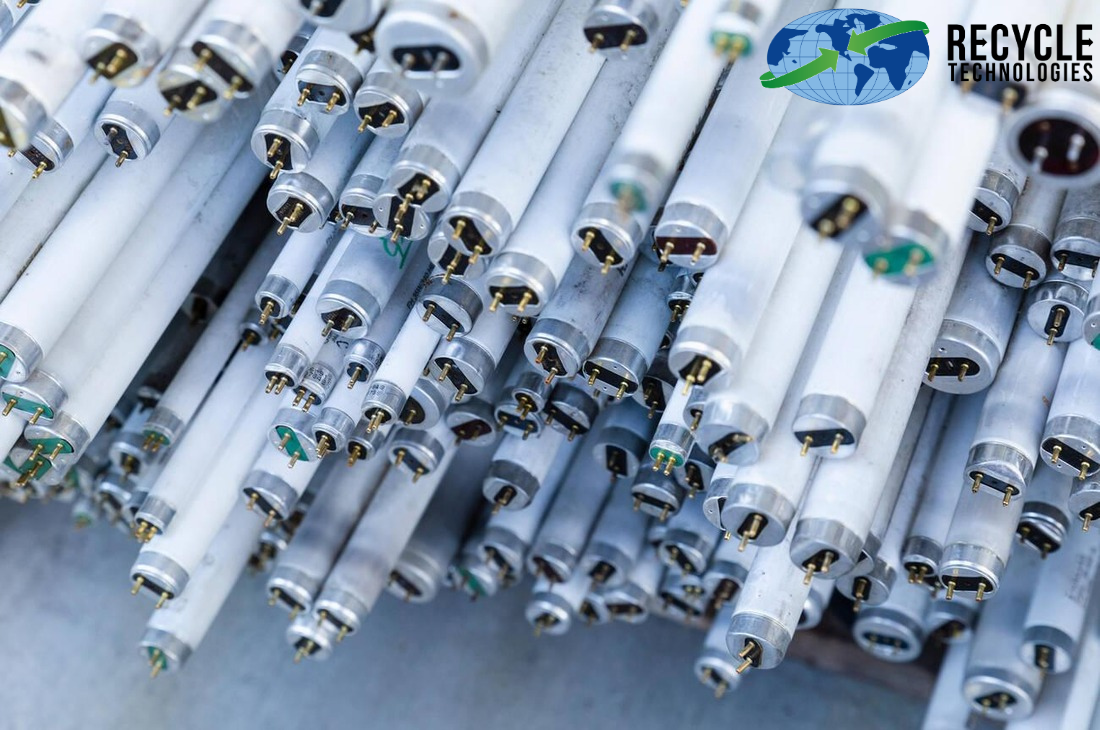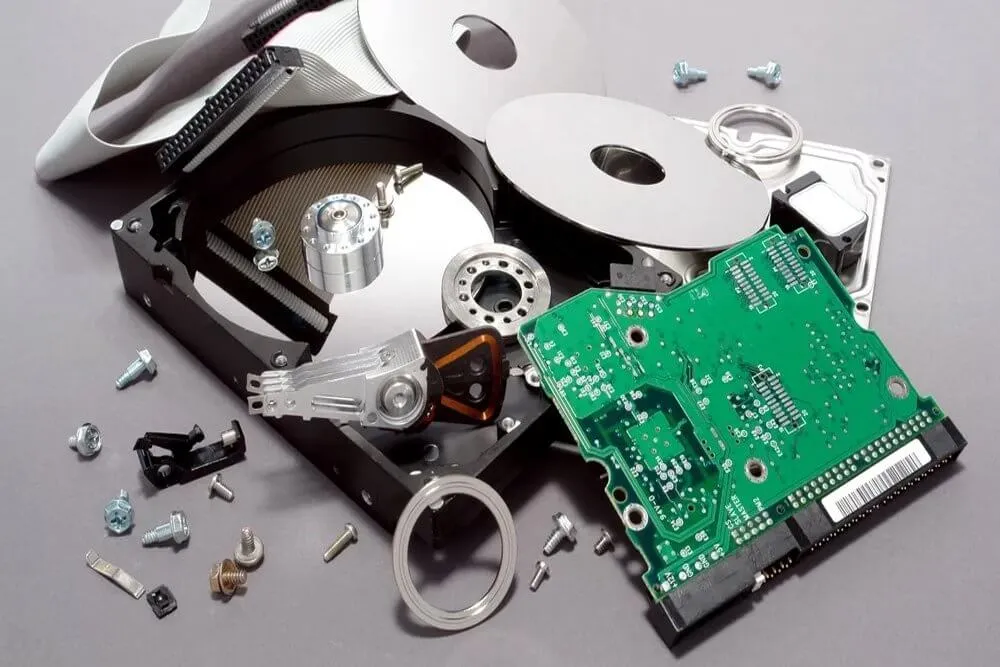Recycling e-waste, especially computer parts, is the fastest growing concern of the modern world. We need to understand that cutting down on usage is not the solution with computers and their accessory parts.
From work and school to entertainment and communication, we rely on machine computational power to get our things done. However, as technology advances, our old computers and their components often become obsolete, leaving us with the question: what do we do with them?
The first option that comes to mind is just throwing e-waste away. While this may seem like an effortless way out, there are many environmental and monetary consequences associated with it.
The protocols of recycling computer parts may differ from business to business, but the fundamental process of recycling a computer stays the same. At Recycle Technologies, we understand these fundamentals, and we are actively trying to apply them to e-waste management in Minnesota and Wisconsin.
Recycling Computer Parts Process
Step 1: Computer Evaluation
In any recycling computer parts process, the first step is assessing what is inside a computer.
A computer consists of hundreds of tiny electrical components, and it is highly likely that by replacing the faulty part, the computer will start working again. There are options to securely dispose of these faulty parts, but once all or most parts of the computer are done for, then recycling is the inevitable end.
Step 2: Removing Hazardous Material
The metals used in the tiny parts and circuitry of computers can become hazardous if left in a landfill for longer periods of time. Lead, mercury, and arsenic are some of the leading components that contribute to e-waste, and a larger chunk of them come from trash thrown in landfills. These elements leach out of the computer parts into the soil, which can cause damage to the groundwater, and incidentally, plant and human health.
Burning these metal parts is also not the answer here, as it just creates more pollution, which is why incinerators are another huge problem for e-waste management.
Step 3: Material Sorting
Recycling computers works when recycling companies safely take away electronic gadgets and disassemble the larger parts piece by piece. These pieces are then recycled or smashed for reuse.
At Recycle Technologies, our sorting machine helps sort metallic bases from the rest. Normally it takes several employees to comb their way through computer parts in a recycling facility, which can cause potential health risks to the workers.
To avoid this, Recycle Technologies employs a sorting machine to help make the computer recycling parts process faster.
Step 4: Shredding
Shredding is one of the prominent ways in recycling computer parts. For hard drive destruction, we use a shredder after we have ensured all data is wiped, as we feel the data on these drives must be a no concern for anyone.
Recycle Technologies is a certified IT asset disposition company, so you can rest assured that all data on your devices will be obliterated.
Benefits of Recycling E-Waste
There are numerous benefits attached to recycling e-waste. The materials used in hundreds of computers, when combined, can generate power and electricity for thousands of homes. Just this fact alone is sufficient to convince people to recycle e-waste, but the following benefits can be kept in mind when deciding to recycle e-waste.
The material such as chemicals and metallic parts used in computers is hard to produce from scratch every time a computer is manufactured. By reusing the material to develop computers, material demand is reduced, thus minimizing their production, and eventually lowering industrial pollution from the environment. It also relaxes the demand for mining more rare earth metals, such as cobalt, which are used in all smartphones.
By opening separate places for recycling a computer such as recycling centers and facilities, opportunities are provided to the people in the form of jobs.
Another good thing about recycling computer parts is the renewed and refurbished device option. If people give their laptops for recycling or reuse, after a few parts' replacement, other people who are unable to afford new and latest computers get access to computers.
E-waste Recycling: Can We Make Something Out of Computer Parts?
Once different material from the electronic waste is collected and separated, there are hundreds of places where it can be reused. Some of the most amazing examples of electronic wastes are discussed below:
Jewelry
All hand-held electronic devices are made of silver and gold and in some cases even platinum. By extracting it from the devices, beautiful jewelry ornaments are created. Many startup companies are investing in this as a viable business, and we are expected to see its market share increasing in the coming years.
Furniture
There are a lot of plastic presents on every computer. After collecting and refining it, a lot of chairs, desks, and even swings are created from the same plastic. Some polymers used as binding agents retain their properties even after a computer is of no use. We can reuse them for furniture binding to breathe a new life to such materials.
Wiring
There are many circuits in a computer. Each circuit is connected by one wire or another. By separately collecting each of the copper, zinc, and other metal wiring, new wires are created which are then reused in electric wiring of a house.
Other Electronic Gadgets
Plastic is used in every electronic gadget out there. Plastic which comes from different computers is present on different corners of television sets, fans, air conditioners, and many more.
Conclusion
Recycling computer parts is not good for the environment; it is also good for the economy and our health. By making responsible choices about how we dispose of our old electronics, we can help create a more sustainable future for everyone.
Through recycling e-waste pollution can be controlled, which is one of the most worrisome phenomena on Earth today. Electronic waste Recycling must be recycled so that we achieve a sustainable future for coming generations.
Next time you are ready to upgrade your computer, do not just throw away the old one. Take some time to find a responsible e-waste recycling company such as Recycle Technologies and give your old computer parts a new lease on life. Together, we can make a difference!












